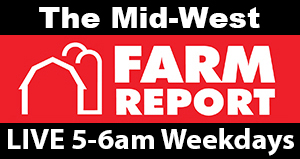
After three years of changing our day to day eating and buying habits, animal protein markets are working on getting the pendulum back towards center. Brenda Boetel is a professor and extension commodity marketing specialist at UW River Falls. While beef, poultry and pork are all facing different challenges, she gave a broad look at where the meat industry stands today during the Wisconsin Ag Outlook Forum.
When Professor Boetel looks at the overview of animal proteins a few things stand out. First, demand was generally met in 2022 with mostly good availability on animal proteins. But grocery store prices didn’t match what was found on farm and at processors. While grocery store prices went up, Boetel says that inflation and strong demand continues to drive prices at the store higher. Looking to 2023, disease pressures, consolidation and drought threaten to challenge farmers and the industry.
She broke out issues for beef, pork, and poultry-
Pork
-Input prices are driving down profitability. As corn continues to climb, margins shrink.
-Lower pig numbers drove more consolidation as packers looked to ensure their animal supply.
-There are increased numbers of several pig diseases across the globe. If any of those make it to hog farms in the U.S. it would have devastating consequences.
-Pork exports were down in 2022 due to a strong US dollar.
-India is growing in population, but that isn’t the only factor in increasing sales in export countries. Personal income has to increase for those people to afford our goods.
Beef
-Drought has caused a sharp increase in slaughter numbers. Steer slaughter was down however both cow and heifer slaughter numbers have increased. This will lead to lower beef herd numbers longer term.
– There has been about a million head decline in cow numbers. Those numbers are more concentrated in drought areas. If rain comes for many in need ranchers will hold back heifers from slaughter in order to rebuild their herds, this will lead to less beef on the market.
-US beef exports will likely decrease around 13% this coming year over last. There just won’t be the product to sell as Americans purchase what we produce plus imported beef from other countries.
– Wisconsin farmers have a lot of opportunity ahead of them. Forage stores here are in good shape and there are lots of beef on dairy calves to be found. There is the potential for bull calf prices to climb back to the $500-600 prices that we saw almost a decade ago.
Poultry-
-The turkey industry was significantly affected by avian influenza, particularly here in Wisconsin. Regrowing the national turkey flock numbers will happen but it will take time.
-The strong dollar limited export demand for turkey, further driving down prices for growers.
-It remains to be seen if avian influenza will reappear this spring.
-Chicken accounts for just over half of the meat consumed in the US. There will likely be more demand for chicken as beef and pork prices continue to climb.

Unless there are serious changes to land values, ordinance development in localities and an increase in l9cal processors, small farms will continue to be squeezed out and there will be a continuing decline in younger people who have the financial means to replace an aging farmer population. It isn’t as simple as rain and increasing herd counts. You have to have people who are willing to do the work and who can afford to start farming.